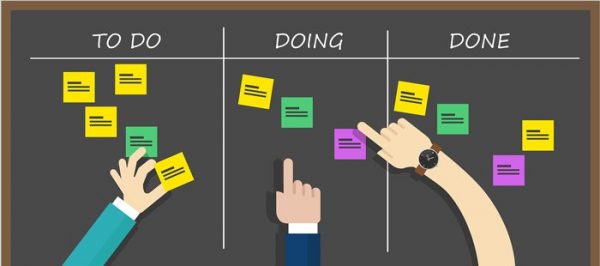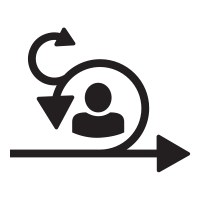Software is eating the world
Software Development is an art as much as it is a science. We follow a continuous improvement process approach throughout the entire software development life cycle. We strive to evolve and adapt to continuous change to deliver high quality software that is optimized for your business. How do we do it? We follow the Agile principles with the Scrum framework to embrace a structured yet dynamic approach to deliver software early and often. Our project management methodologies involve –
1. Iterative Incremental Method
Iterative Incremental software development is collation of software development methods based on Waterfall and various Agile software development frameworks, where requirements and solutions evolve through collaboration between self-organizing, cross-functional teams. Typically, in this lifecycle model the project is broken down in Multiple Delivery Phases for the Client to review and give his feedback where time frame of each delivery is based on project attributes (nature, size, span, Client expectation, etc.).
- More flexible approach
- Smaller iteration cycles
- Manageable Milestones
- Easier Risk management
- Facilitates active customer feedback
2. Agile (Scrum)
What is Agile?
Agile software development refers to a group of software development methodologies based on iterative development, where requirements and solutions evolve through collaboration between self-organizing cross-functional teams.
What is Scrum?
Scrum is a subset of Agile. It is a lightweight process framework for agile development, and the most widely-used one. The process framework includes a set of practices that must be followed. It is ‘lightweight’ keeping the overhead of the process as small as possible, to maximize the amount of productive time available for getting useful work done.
Key Advantages of using Scrum
- Faster time-to-market with rapid, iterative releases to show progress early and often
- Helps implement feedback faster
- Adapt to change faster to deliver business value
- Motivated team
- Focuses on the customer and business value
- Expedited learning cycles
- Leads to continuous learning and adaptation
3. Kanban
Kanban is a visual system for managing development work as it moves through the software development process. The Kanban Method provides a great set of principles for visualizing the work, delivering products and services continuously and getting customer feedback more often and with greater speed. Consequently, it helps get to market faster with greater fidelity to what the customers want from those products and services.
Benefits of using Kanban
- Enhances transparency
- Improves productivity
- Visualize and limit work in progress
- Improves throughput
- Enhances work efficiency and boosts morale





